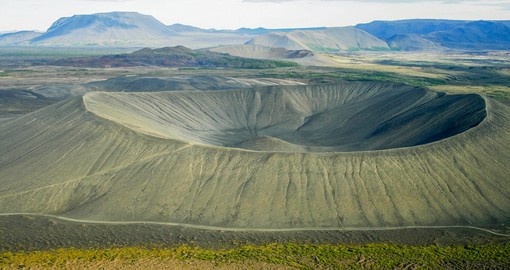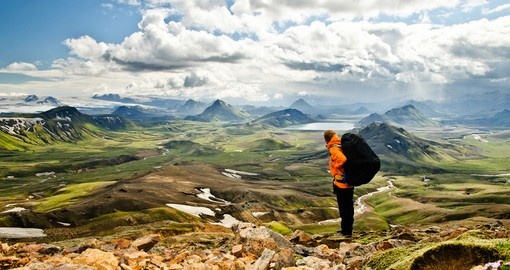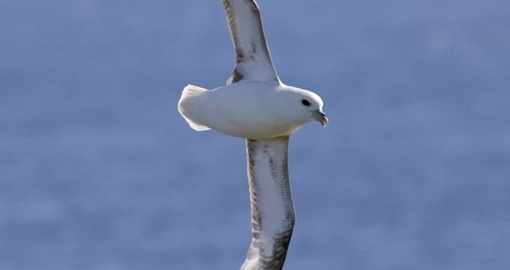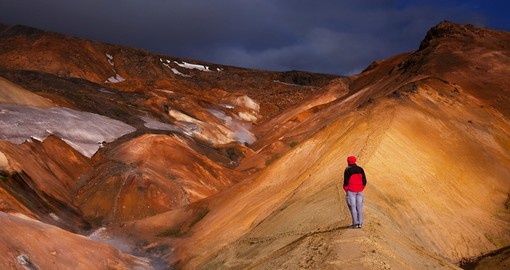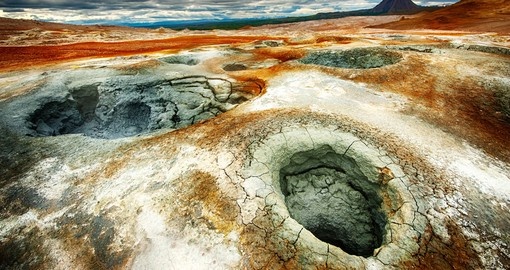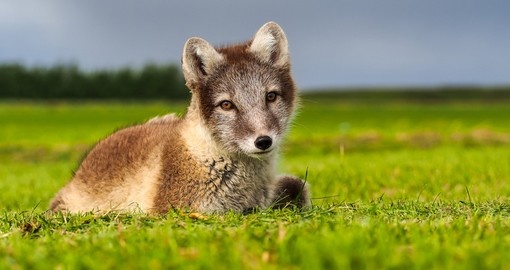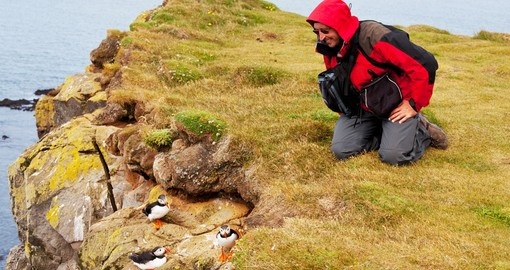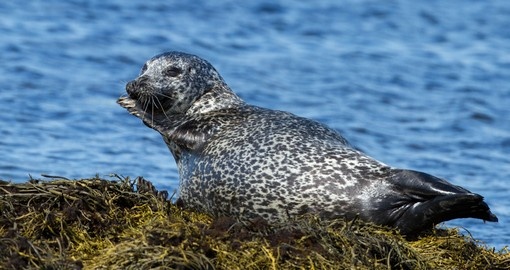Iceland Nature & Wildlife
Located on the Mid-Atlantic Ridge, Iceland is home to some incredible natural scenery. A relatively young, geographically isolated country, the island’s wildlife reflects its age. There are very few insects in Iceland and before human settlement, the only native animal was the Arctic Fox.
A known paradise for birdwatchers, Iceland is particularly rich in rarely spotted species. Its location allows it to provide habitats for birds passing through from both North America and Europe. Considering its northern position, Iceland has relatively mild winters. As a result, its long coastline, as well as its cliffs, provides many breeding spots for various birds. These cliffs host several seabird populations including skuas and kittiwakes, however, the most common and popular bird found in Iceland is the Atlantic Puffin. It has been reported that there are some 3-4 million pairs living on the island.
Iceland’s waters support many marine mammals. The island’s many uninhabited coasts offer sanctuary to both harbour and grey seals. Of the two, the harbour seal is the most common. Whale species are abundant and 23 species of cetaceans have been recorded. The most commonly spotted are minke whales and white-beaked dolphins. There are also 300 fish varieties found in the waters that surround the island.
An incredibly eco-conscious country, Iceland is home to three national parks: Snaefellsjökull in West Iceland, Thingvellir in South Iceland, and Vatnajökull in Southeast Iceland. Snaefellsjökull was established as a national park in 2001 and hosts a 700,000-year-old stratovolcano with a glacier at its summit. This mountain is well known in part due to Jules Verne’s 1864 novel, Journey to the Center of the Earth in which the main characters descend into the volcano, leading to the earth’s centre. Thingvellir, established in 1928, is also a cultural UNESCO World Heritage Site. It lays claim to Pingvallavatn, the largest natural lake in Iceland.
Of Iceland’s three national parks, Vatnajökull is the largest. Designated in June 2008, it is also the largest national park in Europe. It is home to the biggest and most voluminous Icelandic ice cap. The park makes up more than 8% of the country and contains many diverse landscapes including volcanoes, waterfalls, mountain ridges, and more.
Iceland Travel Information
At Goway we believe that a well-informed traveller is a safer traveller. With this in mind, we have compiled an easy-to-navigate travel information section dedicated to Iceland.
Learn about the history and culture of Iceland, the must-try food and drink, and what to pack in your suitcase. Read about Iceland's nature and wildlife, weather, and geography, along with 'Country Quickfacts' compiled by our travel experts. Our globetrotting tips, as well as our visa and health information, will help ensure you're properly prepared for a safe and enjoyable trip. The only way you could possibly learn more is by embarking on your journey and discovering Iceland for yourself. Start exploring… book one of our Iceland tours today!
UK & Europe by Goway is the exclusive division of Goway that specializes in planning and organizing Iceland tours and experiences. Choose from a simple city stopover, self-drive tours, motorcoach tours, independent travel modules, and much more. We want to be your first choice when next you go globetrotting to Iceland.
Get a Trip Quote Order a Brochure







